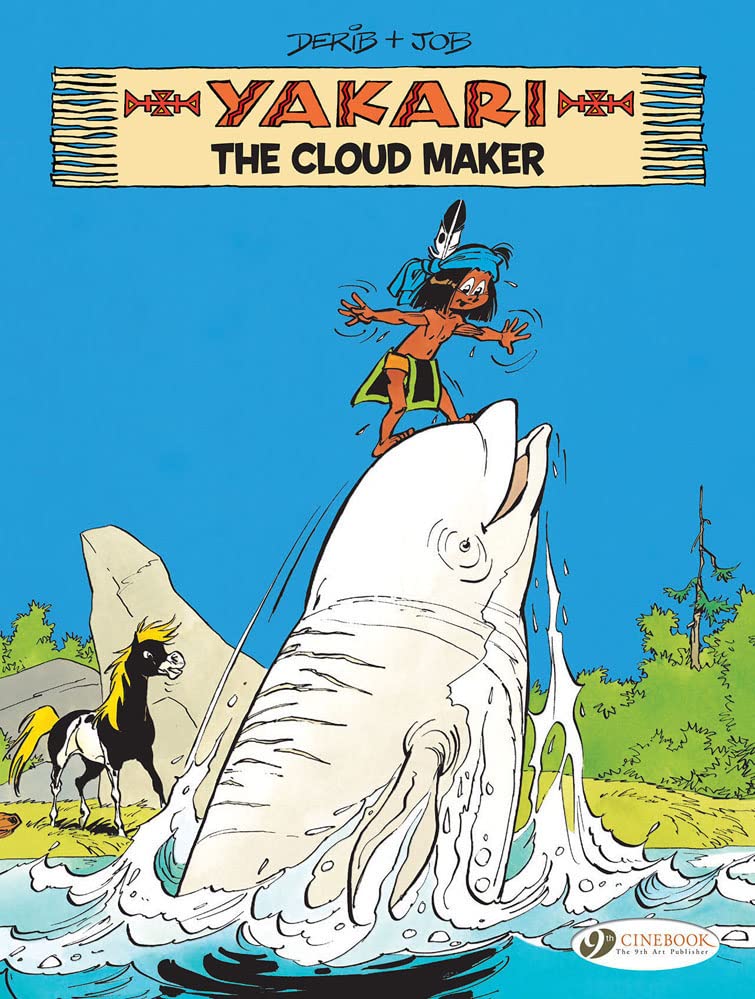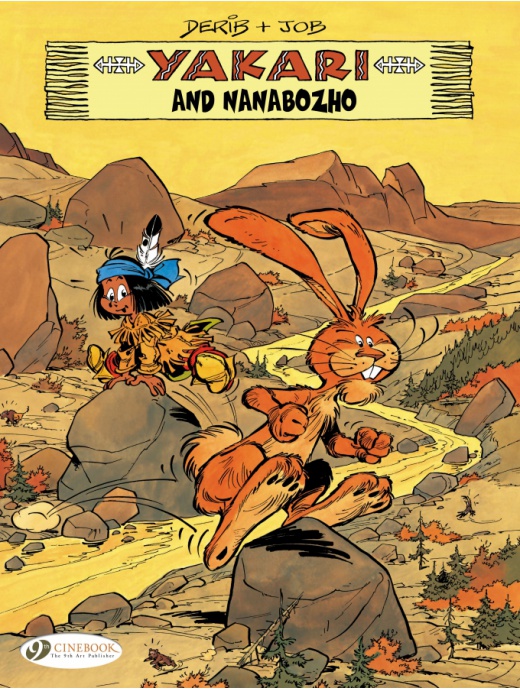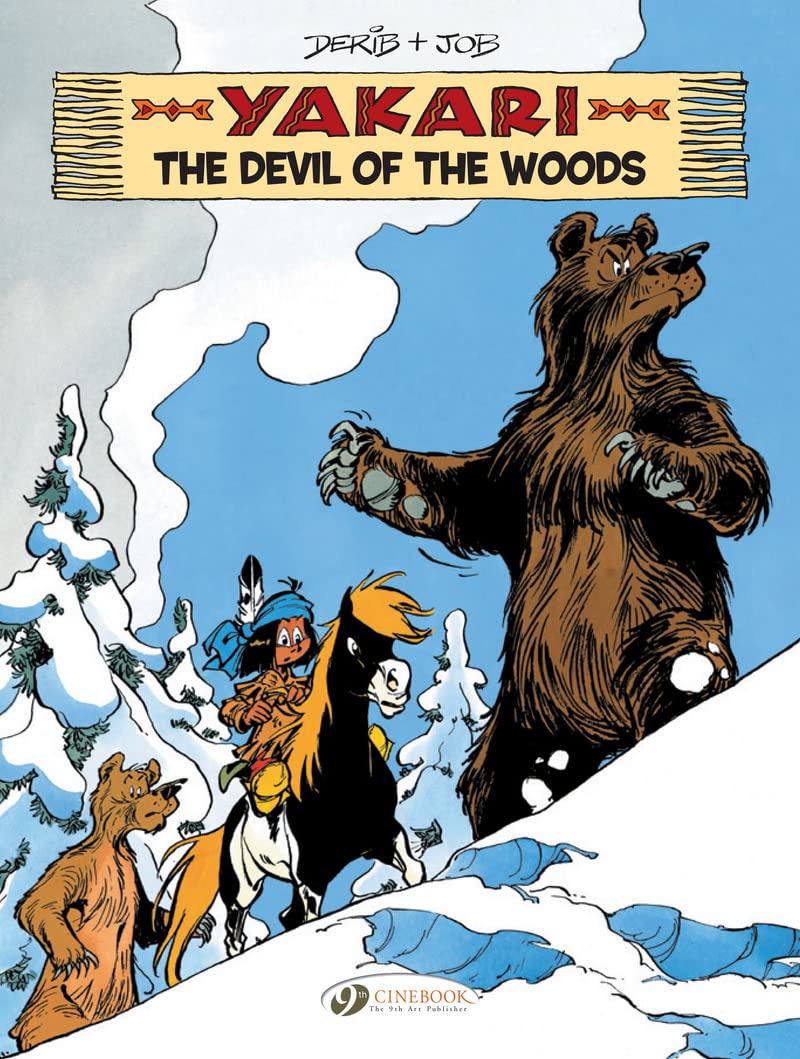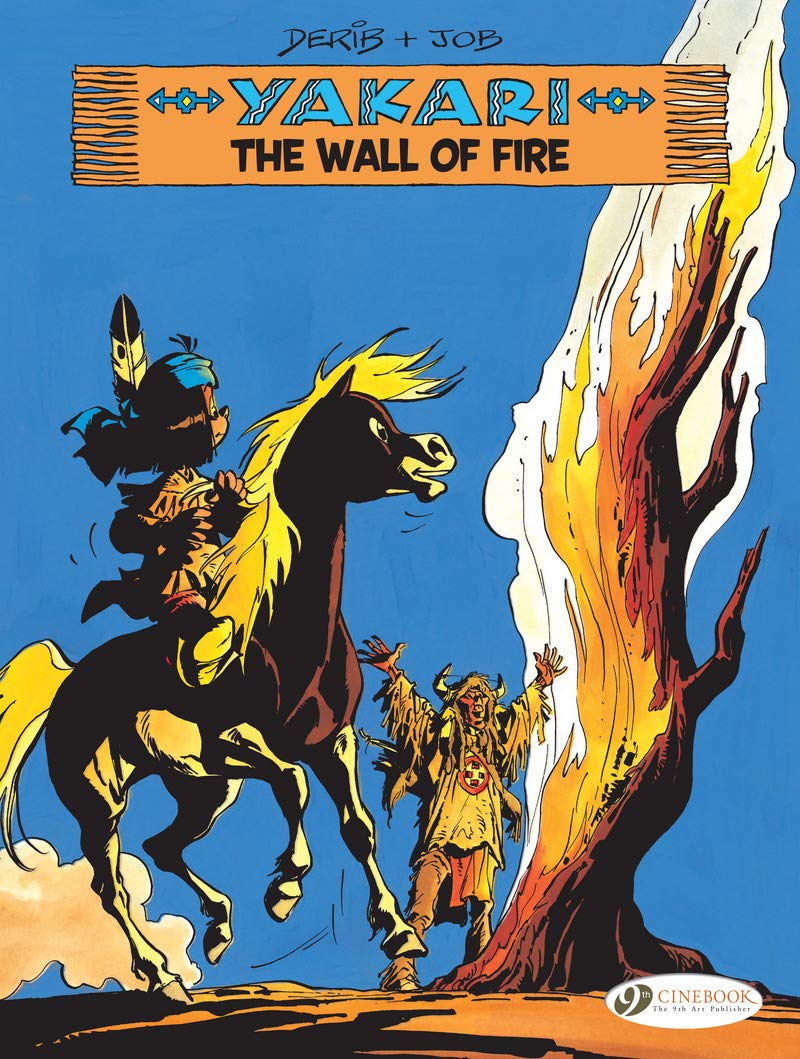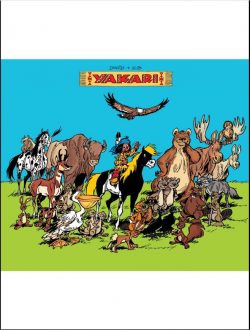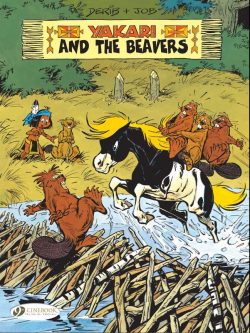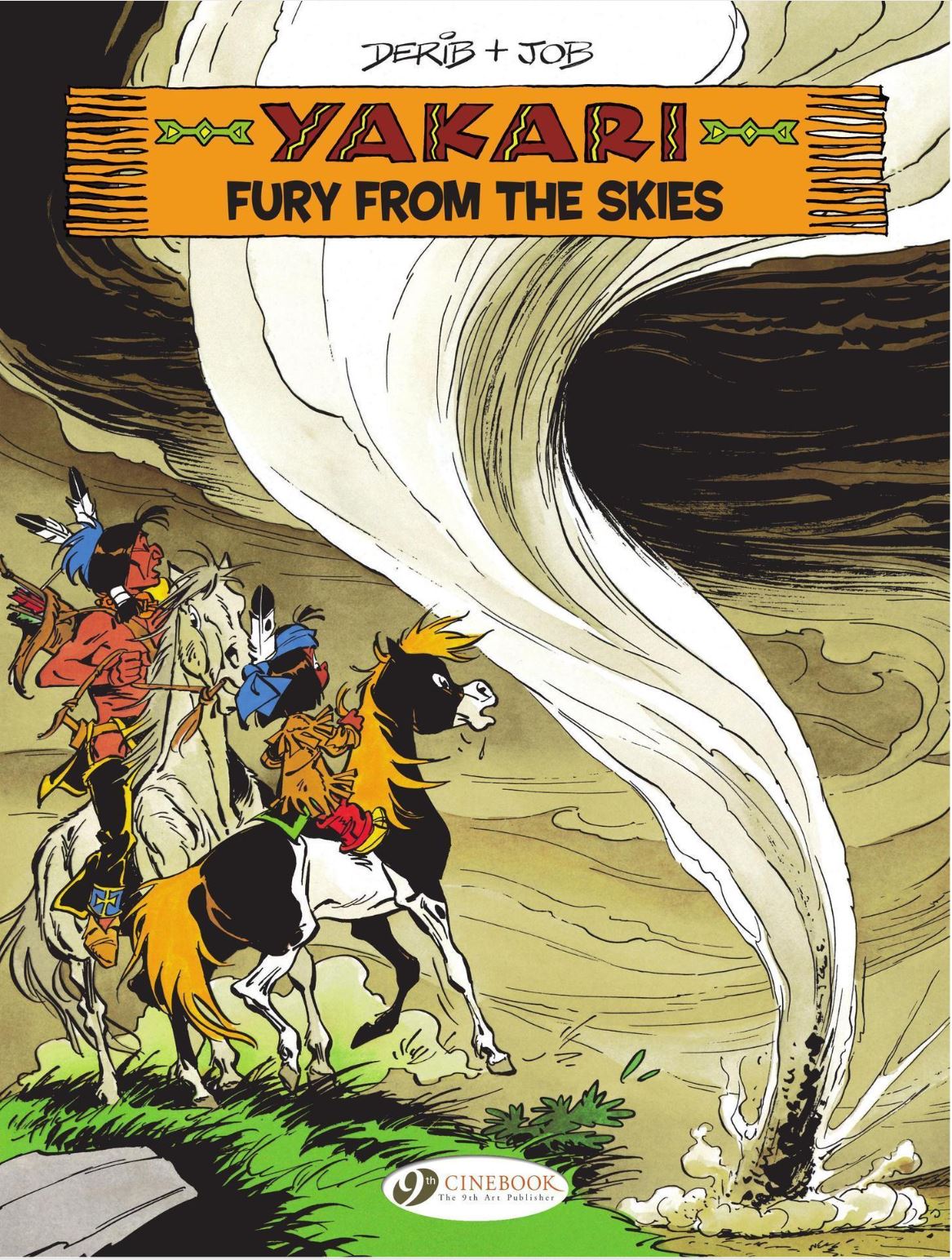
By Derib & Job, coloured by Dominique and translated by Jerome Saincantin (Cinebook)
ISBN: 978-1-80044-019-4 (Album PB/Digital edition)
Win’s Christmas Gift Recommendation: Another Kind of Wonderful Life… 9/10
In 1964 children’s magazine Le Crapaud à lunettes was founded by Swiss journalist André Jobin, who then wrote for it under the pseudonym Job. Three years later he hired fellow Franco-Swiss artist Claude de Ribaupierre AKA “Derib”. The illustrator had launched his own career as an assistant at Studio Peyo (home of Les Schtroumpfs): working on The Smurfs strips for venerable weekly Le Journal de Spirou. Thereafter, together they created the splendid Adventures of the Owl Pythagore before striking pure comics gold a few years later with their next collaboration.
Derib – equally au fait with enticing, comically dynamic “Marcinelle” cartoon style yarns and devastatingly compelling meta-realistic action illustrated action epics – went on to become one of the Continent’s most prolific and revered creators. It’s a crime such groundbreaking strips as Buddy Longway, Celui-qui-est-nà-deux-fois, Jo (first comic to deal with AIDS), Pour toi, Sandra and La Grande Saga Indienne) haven’t been translated into English yet, but we still patiently wait in hope and anticipation…
Over decades, much of Derib’s stunning works have featured his beloved Western themes: magnificent geographical backdrops and epic landscapes. Yakari is considered by fans and critics to be the strip which led him to his deserved mega-stardom. Debuting in 1969, self-contained episodes trace the eventful, nomadic life of a young Oglala Lakota boy on the Great Plains, with stories set sometime after the introduction of horses (by colonising Conquistadores) but before the coming of modern Europeans.
The series – which also generated two separate animated TV series and a movie – is up to 42 albums thus far: a testament to its evergreen vitality and brilliance of its creators, even though originator Job moved on and Frenchman Joris Chamblain took on the writing in 2016.
Abundant with gentle whimsy and heady compassion, Yakari’s life is a largely bucolic and happy existence: at one with nature and generally free from privation or strife. For the sake of dramatic delectation however, the ever-changing seasons are punctuated with the odd crisis, generally resolved without fuss, fame or fanfare by a little lad who is smart and brave – and who can, thanks to a boon of his totem guide the Great Eagle, converse with animals…
In 1996, La fureur du ciel was the 22nd European album, but as always, the content and set-up are both stunningly simple and sublimely accessible, affording new readers total enjoyment with a minimum of familiarity or foreknowledge required…
Fury from the Skies is painfully topical as Yakari’s wandering people are moving into lands occupied by buffalo after an eventful winter. The spring sun has brought further problems with oppressive heat and tempers fray when the adults start arguing. Medicine man He-Who-Knows wants to stop and set up camp, but Yakari’s father Bold Gaze chooses to follow his wise son a little further on. The action incenses self-appointed leader Bold Crow and magnifies bad feeling in all the riders…
As Yakari’s parents ride on, the boy is unhorsed by a plague of biting bugs, but his painful embarrassment is as nothing to the distress of his former companions as they set up camp. Old pals Slow Motion and Eyes-Always-Shut have their own ways of dealing with debilitating heat and ravenous flies, but for the rest – even children Rainbow and Buffalo Seed – stress and petty bickering looks like igniting a war, and He-Who-Knows fears big trouble ahead…
Those worries are confirmed when the sky is suddenly filled with fleeing ravens ahead of a monstrous whirlwind that smashing through, devasting the camp, scattering the tribe and injuring helpless humans and their animals. By the time Yakari and his parents return to the demolished campsite, their shocked friends are in a daze with Slow Motion bewailing the disappearance into the clouds of his large lazy friend. The Medicine Man is also gone, and Bold Crow harshly decrees the search party he forms should seek the wise one, not the fat, sleepy one…
Of course, Yakari has his own ideas and – riding his sarcastic steed Little Thunder – sets off to learn what happened to Eyes-Always-Shut. The answer is astonishing and quite troublesome, but at least the lad has a still-stunned camp dog and some very helpful wild turkeys to help him solve a very tricky and potentially dangerous puzzle.
With the big guy recovered, Yakari can turn his attention to finding out what happened to He-Who-Knows, before the adults all go crazy. They had depended on the wise man for years and are beginning to panic and lash out. This task is far more difficult and requires a long journey over spectacularly-realised terrain, some assistance from the Great Eagle himself and literally changing horses in mid-stream before the boy wonder can save the shaman and his world…
Yakari is one of the most unfailingly absorbing and entertaining all-ages strips ever conceived and should be in every home, right next to Tintin, Uncle Scrooge, Asterix and The Moomins. It’s never too late to start reading something wonderful, so why not get back to nature as soon as you can?
Original edition © Derib + Job – Editions du Lombard (Dargaud – Lombard s. a.) – 2000. All rights reserved. English translation 2023 © Cinebook Ltd.

